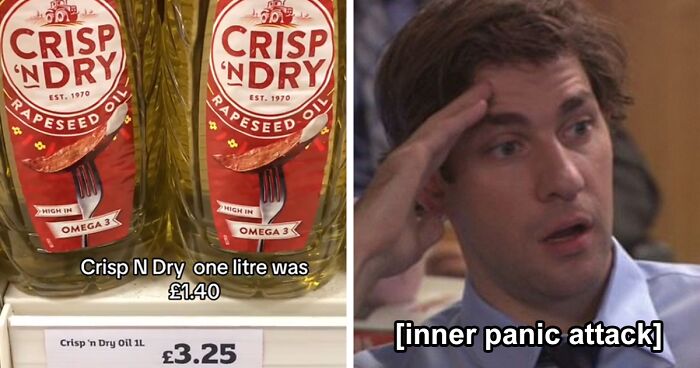
“25% Inflation Went Out The Window”: People React To Man Comparing Store Prices 1 Year Apart
The UK has been in a cost of living crisis since late 2021. Food is one of the areas with the biggest increase. The UK Office For National Statistics reported in the beginning of October that 48% of Britons say they spent more than usual when shopping during the past few weeks. 4 out of 10 adults say they are buying less food because of the surge in prices. To illustrate their hardships, a UK TikTok account Cost Of Living Crisis Tips compared prices at supermarkets from September 2022 to 2023.
A UK resident posted a TikTok comparing prices at their local supermarkets to show just how high the prices of groceries are getting
Image credits: Hobi industri (not the actual photo)
“Let’s see how much prices have changed since September last year in Sainsbury’s. Müller yoghurts were 40p, now they’re 90p – up 125%”
Image credits: costoflivingcrisistips
“These small tins of Heinz beans were 50p, now they’re £1 – up 100%.”
Image credits: costoflivingcrisistips
“Fray Bentos were £1.50, now £3.25 – up 116%.”
Image credits: costoflivingcrisistips
“This Heinz lentil and bacon soup was 85p, now £1.70 – up 100%.”
Image credits: costoflivingcrisistips
“Crisp N Dry one liter was £1.40 and now £3.25 – up 132%.”
Image credits: costoflivingcrisistips
“Goodfella’s pizzas were £1.50 and now £3 – up 100%.”
Image credits: costoflivingcrisistips
“Birds Eye battered cod fillets were £4, now £6.50 – up 62%”
Image credits: costoflivingcrisistips
“Sainsbury’s own French fries were £1.20 and now £2 – up 66%”
Image credits: costoflivingcrisistips
“Birds Eye chicken chargrills were £2.67, now £4.50 – up 68%”
Image credits: costoflivingcrisistips
“Branston beans and sausages were 85p, now £1.50 – up 76%.”
Image credits: costoflivingcrisistips
“Cirio tomato puree was £1.45, now £2.70 – up 86%”
Image credits: costoflivingcrisistips
“Filippo Berio olive oil 500ml was £5, now £7.50”
Image credits: costoflivingcrisistips
The video has drawn people’s attention and racked up over 1 million views
@costoflivingcrisistips#costoflivingcrisis#sainsburys#inflation#foodprices♬ original sound – Cost Of Living Crisis Tips
“This week on food prices exposed Iceland and Food Warehouse. Mature cheese was £1.50, now it’s £2.40 – up 60%”
Image credits: costoflivingcrisistips
“Salad tomatoes were 79p, now they’re £1.19 – up 50%”
Image credits: costoflivingcrisistips
“Chocolate mousse were £1, now they’re £1.50 – up 50%”
Image credits: costoflivingcrisistips
“Hash brown waffles were £1.50, now they’re £2.75 – up 83%”
Image credits: costoflivingcrisistips
“Crispy chips were £2, now they’re £2.75 up – 37.5%.”
Image credits: costoflivingcrisistips
“Hash brown waffles were £1.50, now they’re £2.75 and they’re also up 83%”
Image credits: costoflivingcrisistips
“Red onions were £1 now they’re £1.49 – up 49%.”
Image credits: costoflivingcrisistips
“Tex Max dip was £1.30, now it’s £2- up 53%”
Image credits: costoflivingcrisistips
“Stone Baked garlic bread pizza was £1, now it’s £1.50 – 50%.”
Image credits: costoflivingcrisistips
“Chicken popsters were £1, now they’re £1.50 – up 50%”
Image credits: costoflivingcrisistips
“Orange juice and apple juice was £1.35, now it’s £2 – up 48%”
Image credits: costoflivingcrisistips
“Luxury coleslaw was £1.50, now it’s £2.25 – up 50%. All these products are Iceland’s own brand”
Image credits: costoflivingcrisistips
The TikToker also exposed current food prices at Iceland and Food Warehouse
@costoflivingcrisistips#costoflivingcrisis#foodwarehouse#iceland#inflation#foodprices♬ original sound – Cost Of Living Crisis Tips
The current crisis has many Britons asking: why are groceries getting more expensive when world food prices are seemingly going down?
The UN Food and Agriculture Organization (FAO) reported that the food price index in September 2022 was 136.0. Now, a year later, it’s dropped to 121.5. It’s still high compared to pre-pandemic years, when the highest numbers were merely over 90, but there’s an obvious decline. So why are groceries still getting more and more expensive in the UK?
One of the largest trade unions “Unite” blames the trend of “greedflation”. They reported that food manufacturers, shipping companies and supermarkets have increased prices that go beyond costs of raw materials and wages. Apparently, companies have taken advantage of inflation and increased their profits at the expense of consumers, raising food prices unnecessarily, hence the term “greedflation.”
However, there are those who disagree. The Economist has called “greedflation” a “nonsense idea”. In their article, they argue that it’s the policymakers who let inflation run out of control. Companies have made profit margins on petrol between 2019 and 2022, and supermarkets are absorbing some of the inflation and actually subsidizing food prices.
“You can quite clearly see that [supermarkets’] margins are stronger on fuel and their overall margins are slightly down and the delta between those two is the margin they make on groceries,” Justin King, a board member at Marks & Spencer, told The Guardian.
Food industry experts say that other factors than “greedflation” contribute way more to increasing food prices. They list high energy costs and the disruption of the supply chain, both driven by the ongoing war in Ukraine, as the main reasons behind the still-ongoing rise of prices. Admittedly, high food costs is just one of the factors of the cost of living crisis in the UK.
Both global and local factors have caused the current cost of living crisis in the UK. Brexit and additional taxes on households together with the COVID-19 pandemic and the war in Ukraine share the blame
The UK’s exit from the European Union resulted in the depreciation in the value of the pound, which in turn caused import prices to increase. Brexit also increased the cost of doing business with Europe, which led to stunted growth of productivity overall.
Some domestic taxes also put further pressure on Britons’ finances. The government opted to raise national insurance and council taxes. What’s more, they froze the income tax threshold, which will result in more expenses for most of the working population.
Gas and electricity prices for households increased as well. Just last year, Britain’s energy industry regulator Ofgem raised the price cap by 54%. Suppliers were fast to capitalize on this, as the oil industry company Shell reported their highest profits in 115 years.
These domestic aspects are closely linked to the global pandemic and the war in Ukraine. When the lockdown restrictions were lifted, demand for goods skyrocketed, and businesses were not able to meet it. This resulted in supply shortages all over the world.
Just as the balance began to be restored again, the Russian invasion of Ukraine caused shortages of gas, oil, energy and food. Russia is Europe’s main supplier of gas, and huge amounts of grain and sunflower oil are imported into Europe from the Ukraine. The EU’s sanctions on Russia and the disruption of Ukrainian grain export caused another supply shock, resulting in increased food and energy prices yet again.
Harvir Dhillon, the economist for British Retail Consortium, told The Guardian in May that even if inflation has reached its peak and will start decreasing, high food prices might still remain. “The pace at which food inflation comes down is going to be a lot slower than perhaps we would like,” he said.
People are blaming big food companies and supermarket CEOs in the comments
This is happening all over Europe. Prices double, whilst salaries remain the same... We're being drained
This has been happening in the USA for about two years now. They're trying to blame it on Biden but if it's happening in Europe, how can Biden be responsible. No the reality is the root cause of this is not the USA. This is a universal problem across whole continents. I saw this one coming. They're cashing in on the post COVID boom.
Load More Replies...This probably needs to be made clear - Sainsbury's is expensive these days! For 2023 Aldi is the cheapest supermarket for a basket of groceries but, for the first time, Sainsbury's has come out as the most expensive for a big shop. Go elsewhere if you can.
Aldi is a global supermarket? How did I not know this, it's such a small chain in my area of the US that I figured it was mostly local lol.
Load More Replies...I'm surprised haemorrhoid cream hasn't gone up, we'll all need it the way we are being well and truly f****d in the a**e by these price hikes.
This is happening all over Europe. Prices double, whilst salaries remain the same... We're being drained
This has been happening in the USA for about two years now. They're trying to blame it on Biden but if it's happening in Europe, how can Biden be responsible. No the reality is the root cause of this is not the USA. This is a universal problem across whole continents. I saw this one coming. They're cashing in on the post COVID boom.
Load More Replies...This probably needs to be made clear - Sainsbury's is expensive these days! For 2023 Aldi is the cheapest supermarket for a basket of groceries but, for the first time, Sainsbury's has come out as the most expensive for a big shop. Go elsewhere if you can.
Aldi is a global supermarket? How did I not know this, it's such a small chain in my area of the US that I figured it was mostly local lol.
Load More Replies...I'm surprised haemorrhoid cream hasn't gone up, we'll all need it the way we are being well and truly f****d in the a**e by these price hikes.

 Dark Mode
Dark Mode 

 No fees, cancel anytime
No fees, cancel anytime 






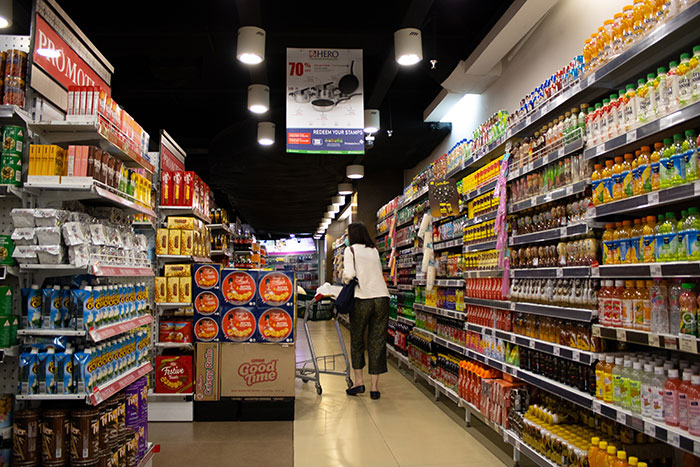
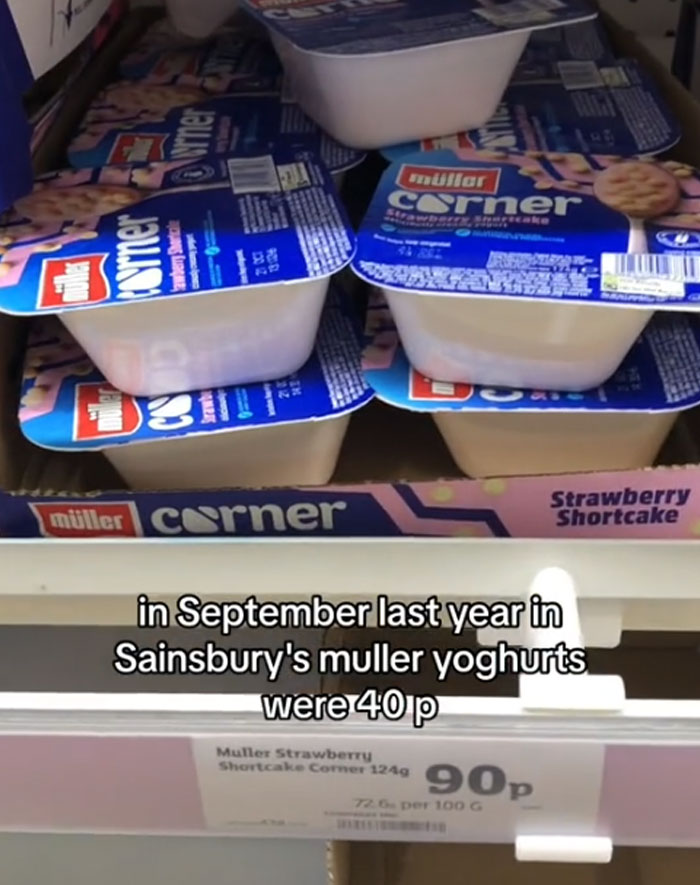
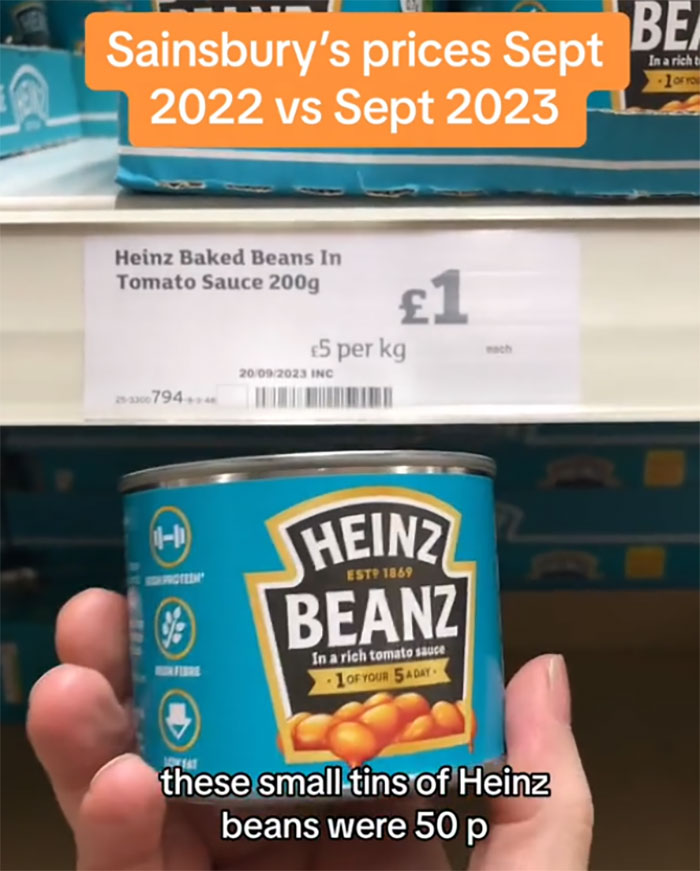
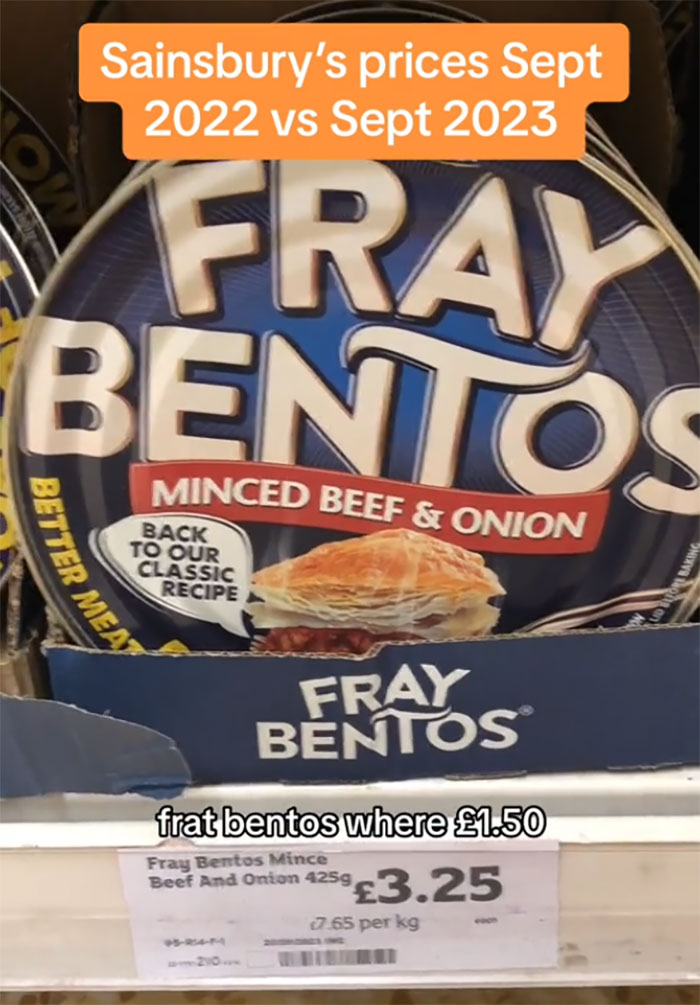
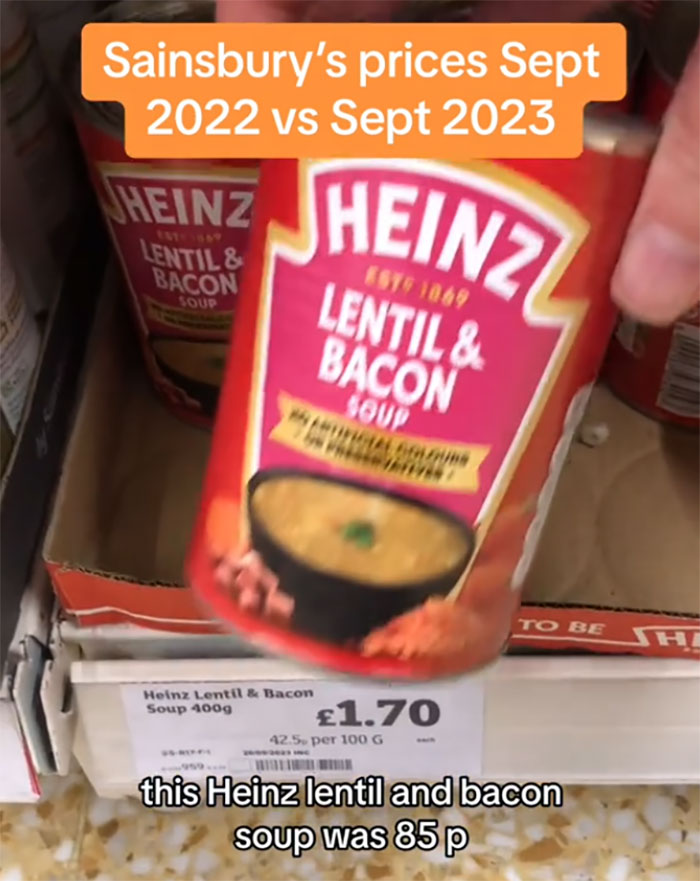
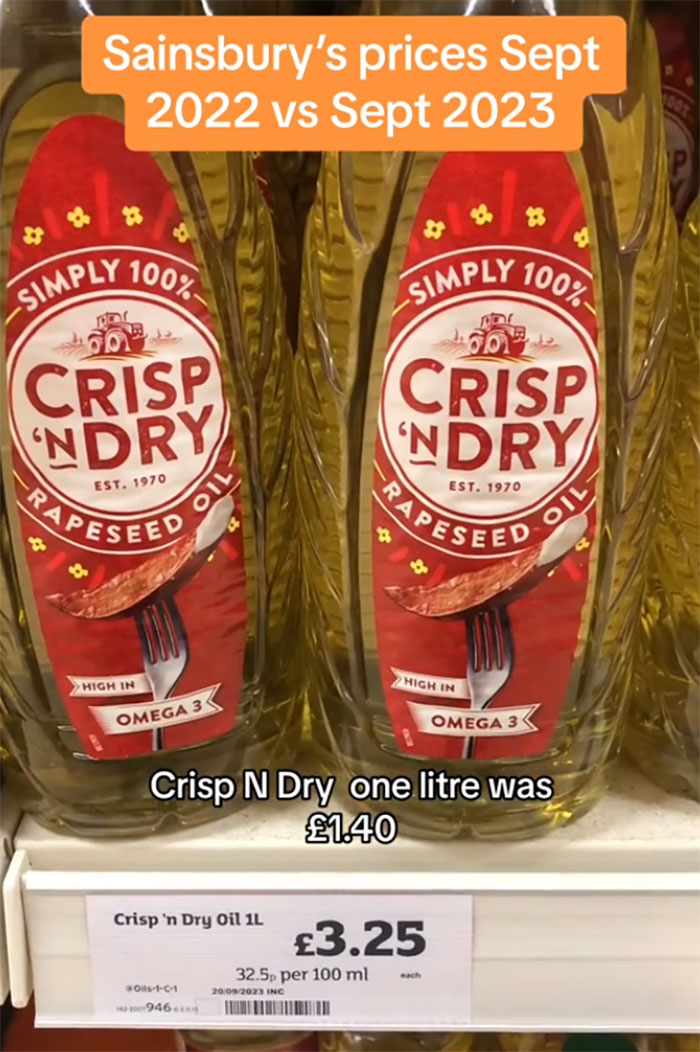
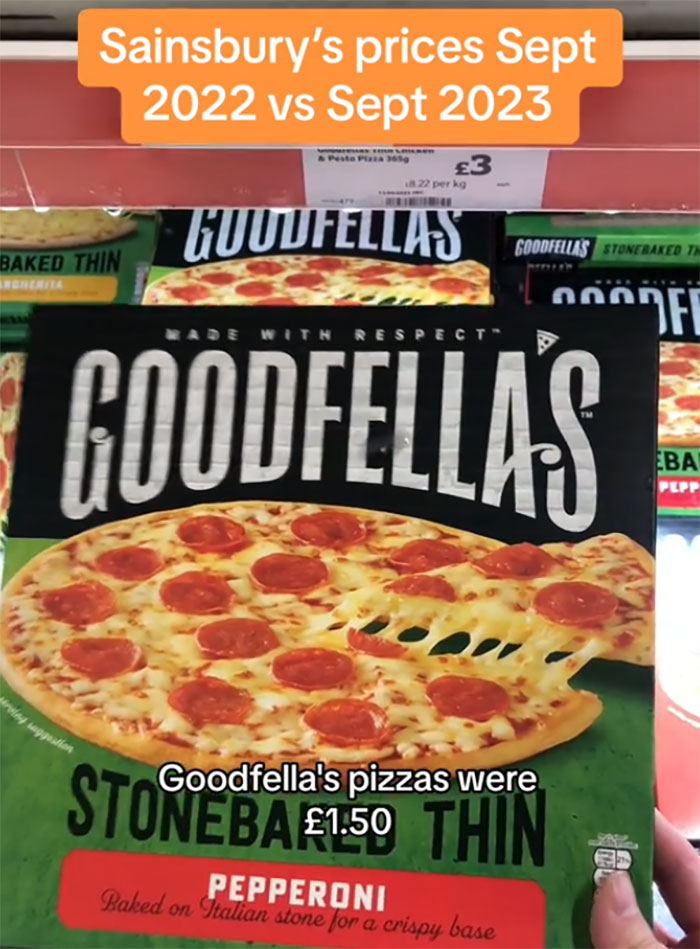
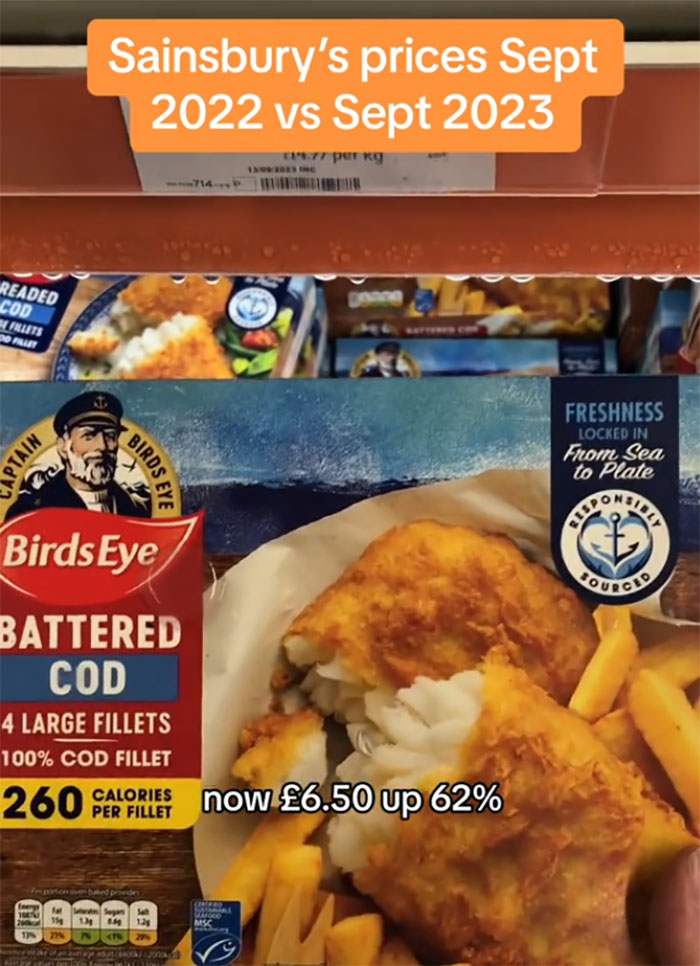
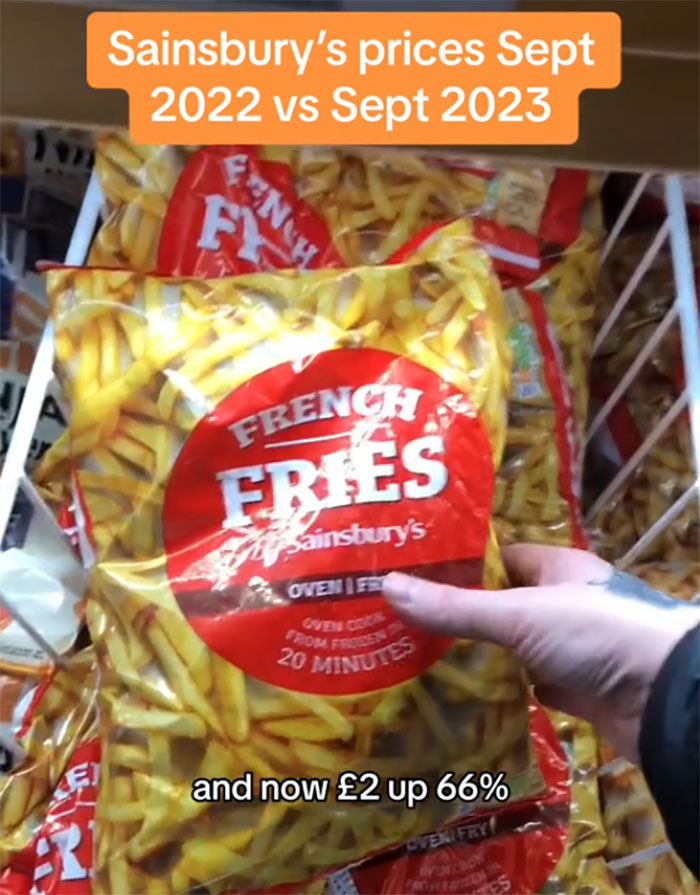
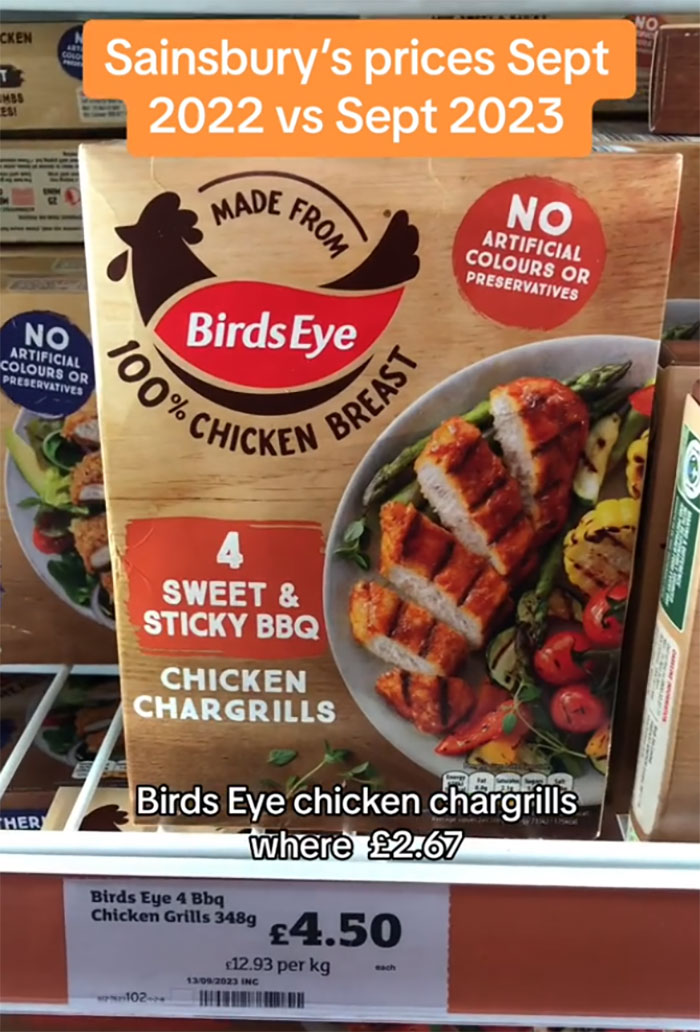
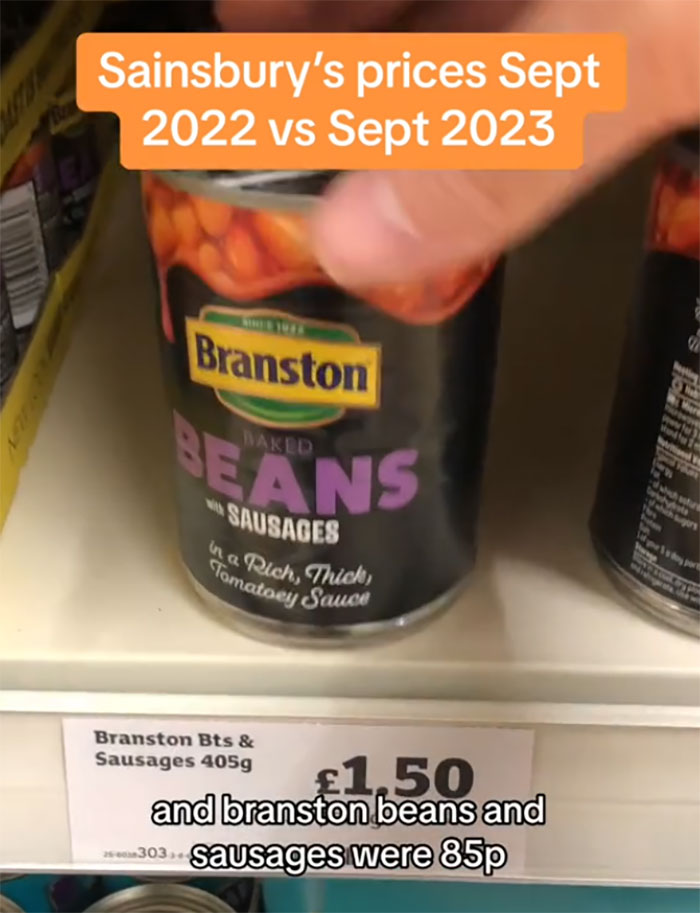
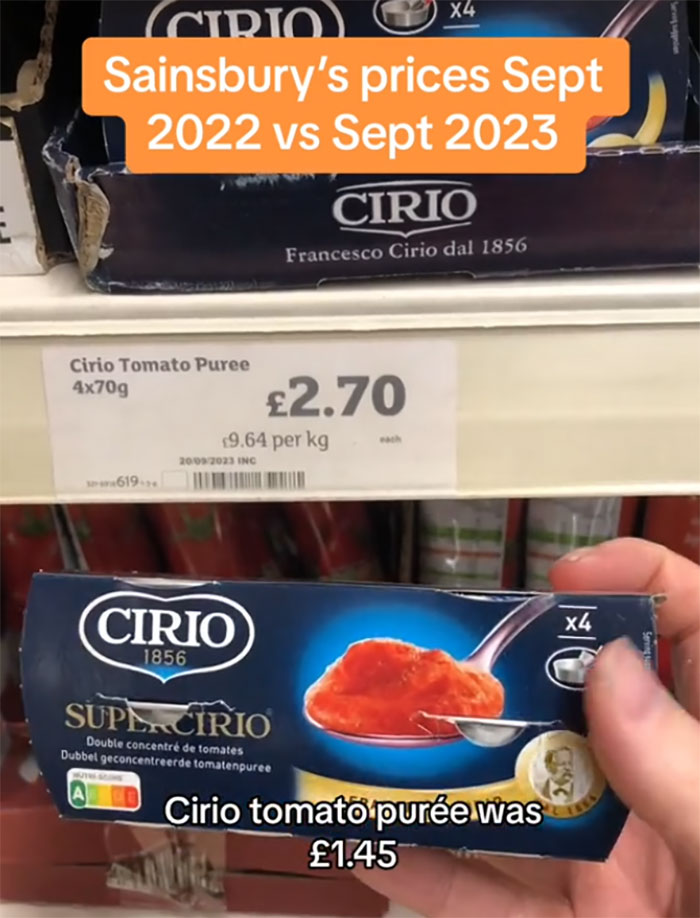
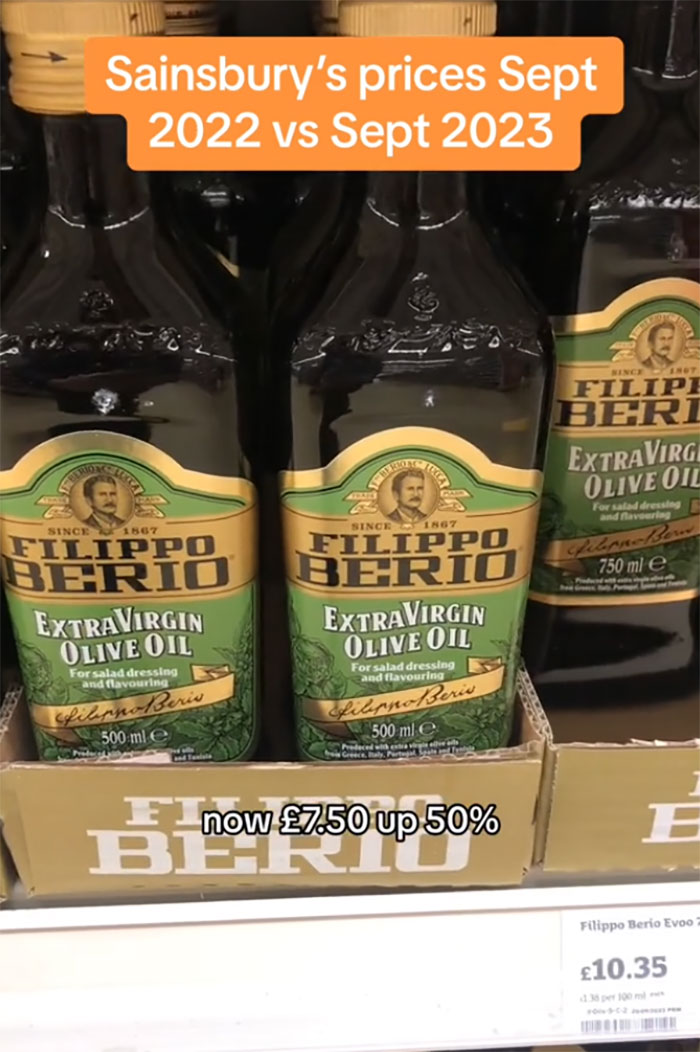
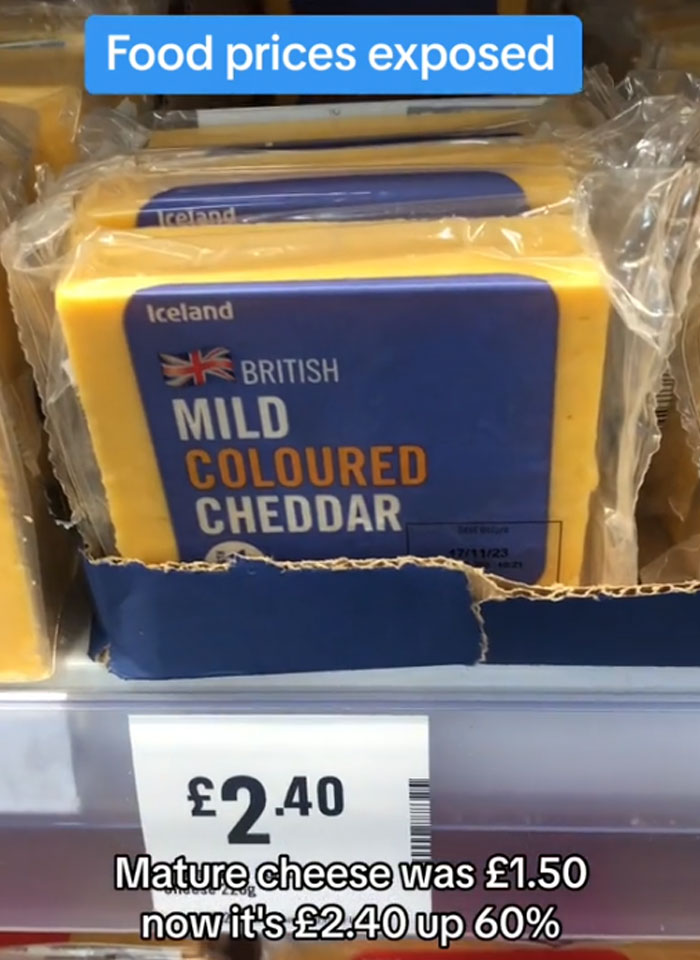
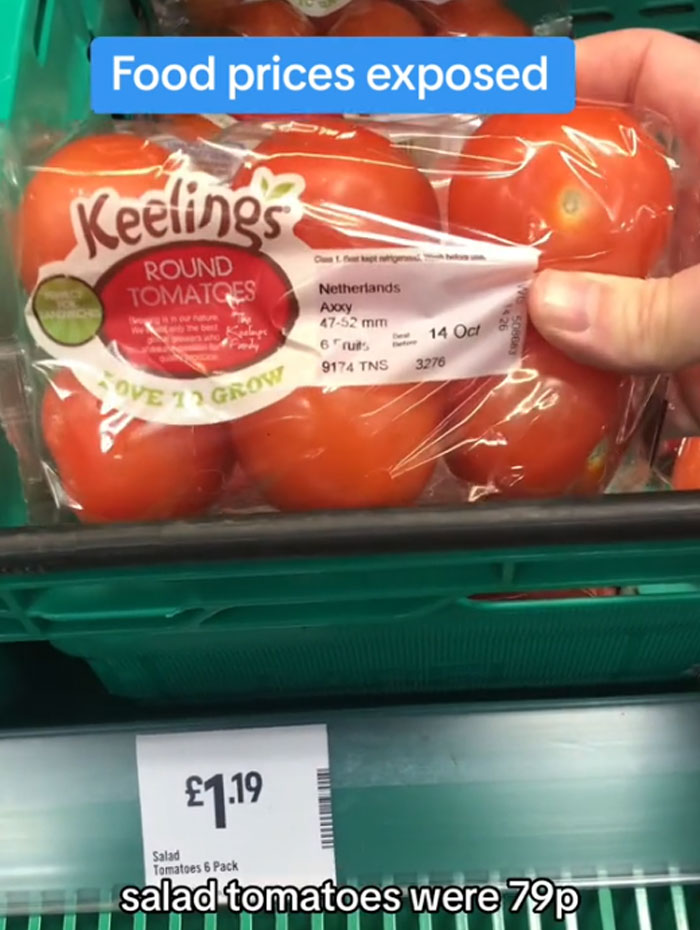
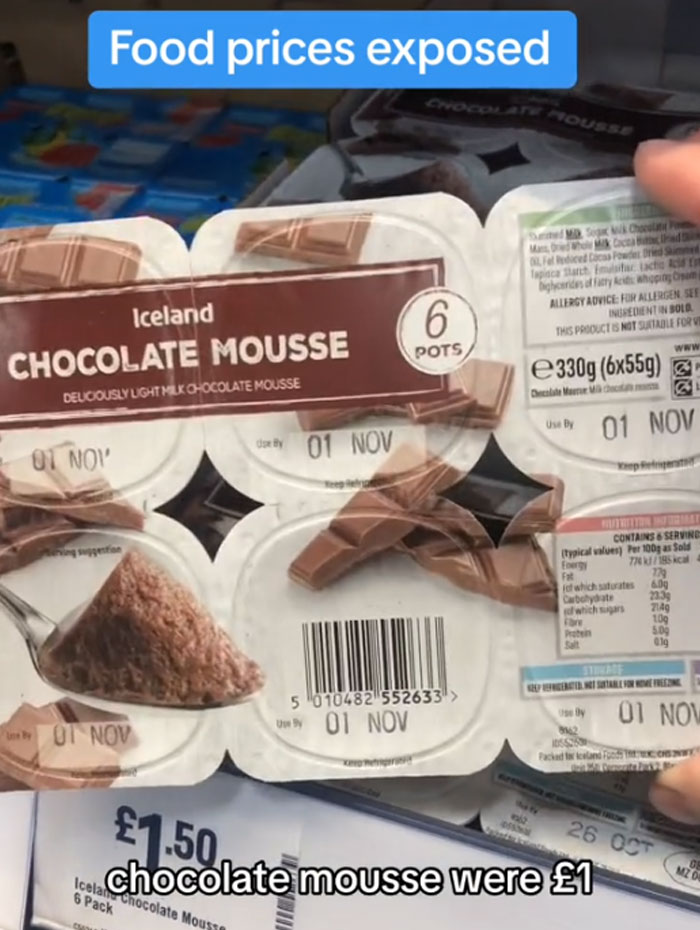
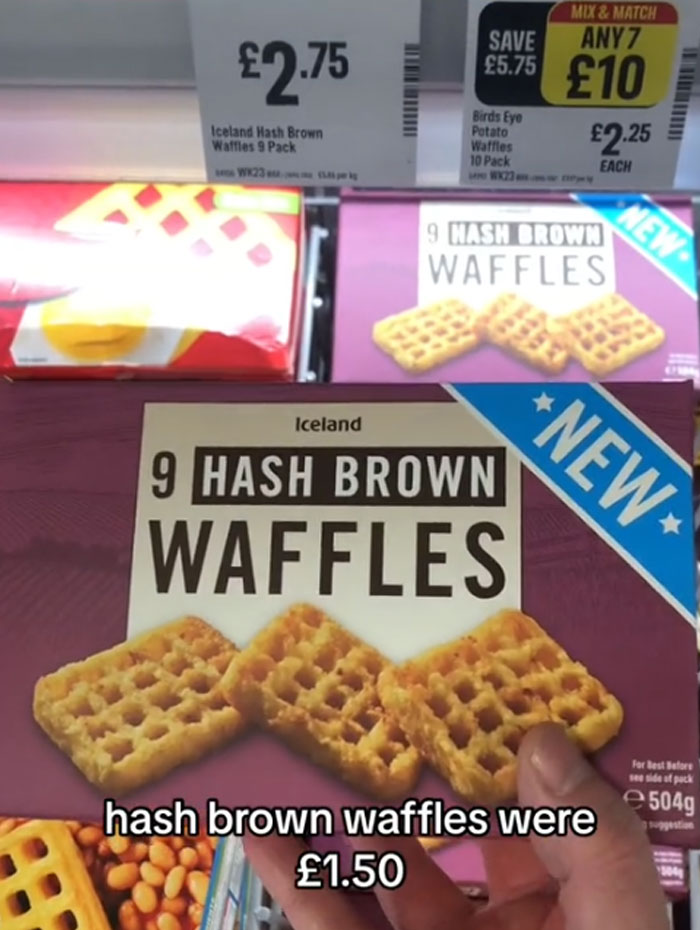
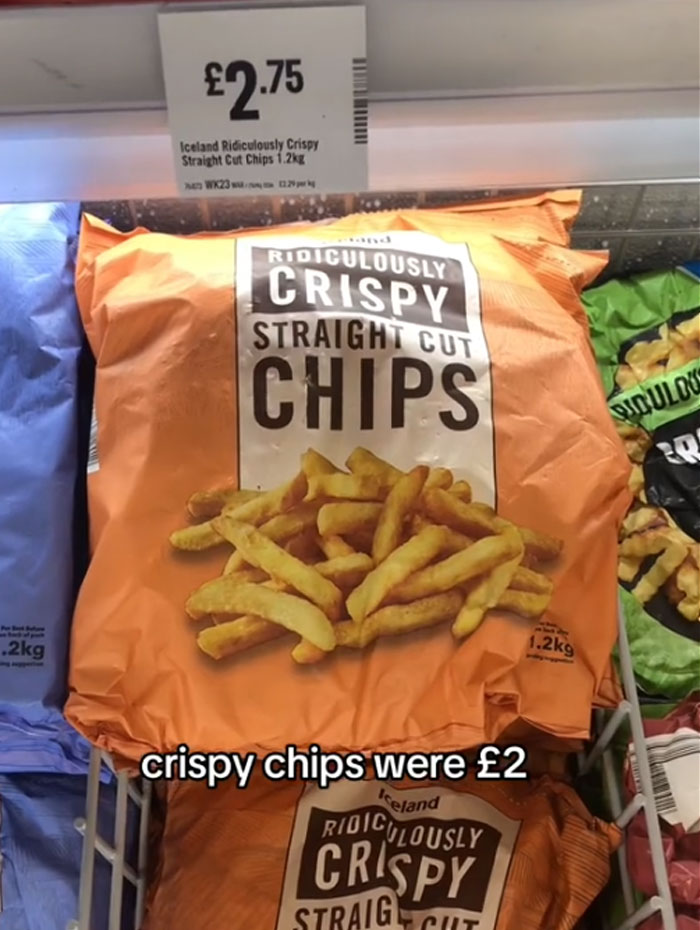
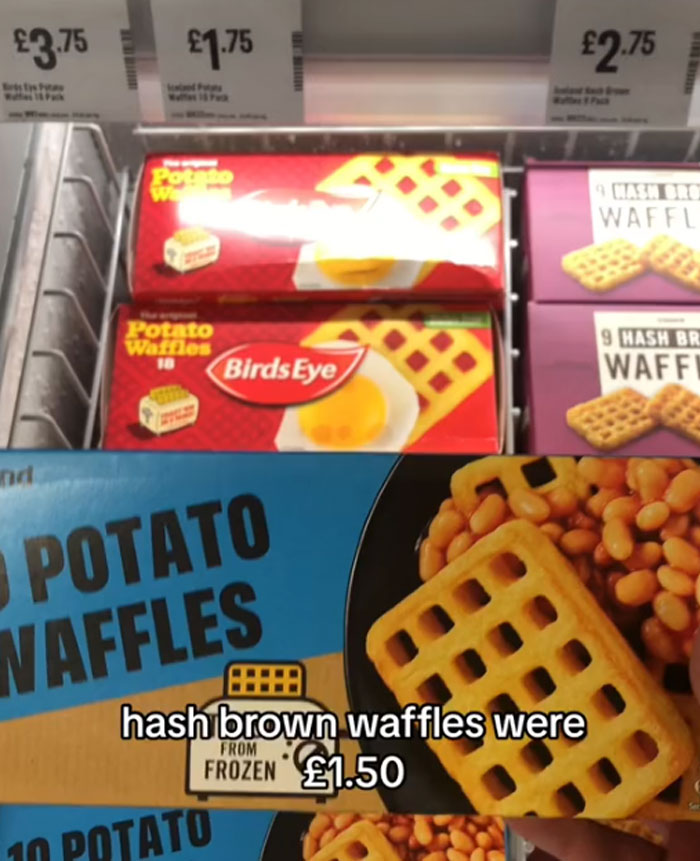
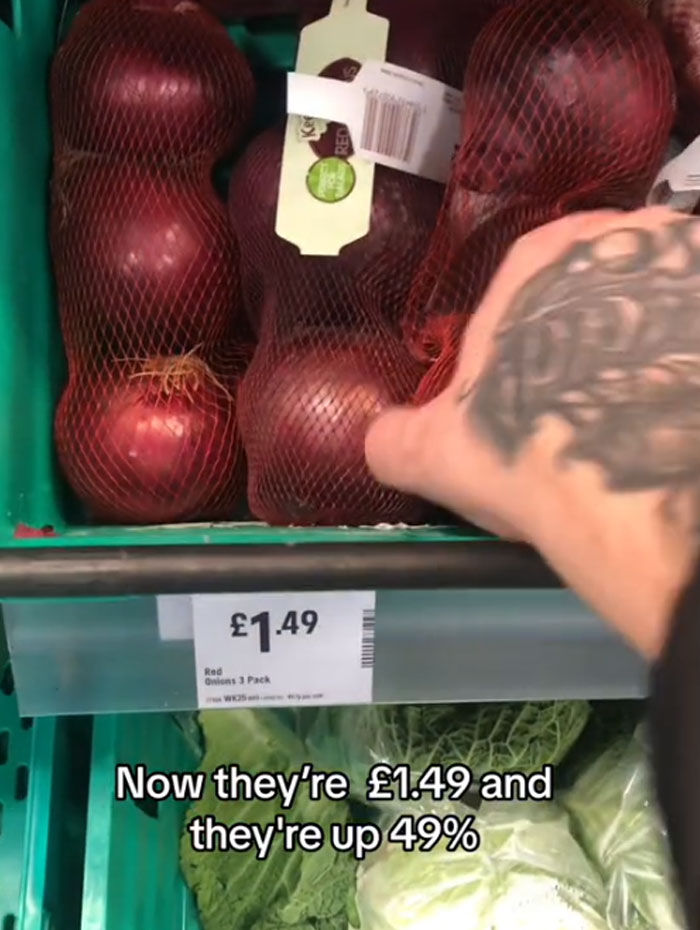
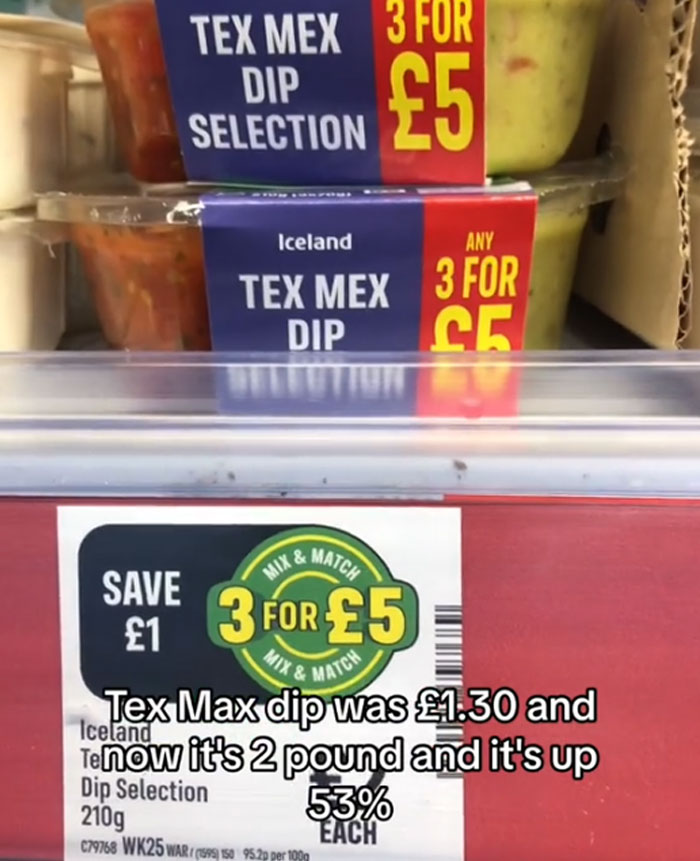

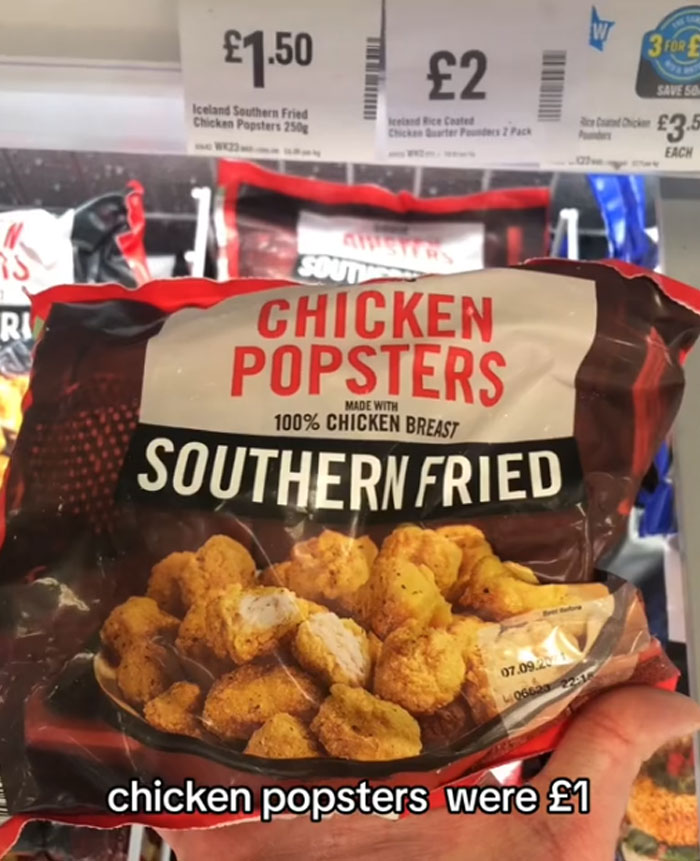
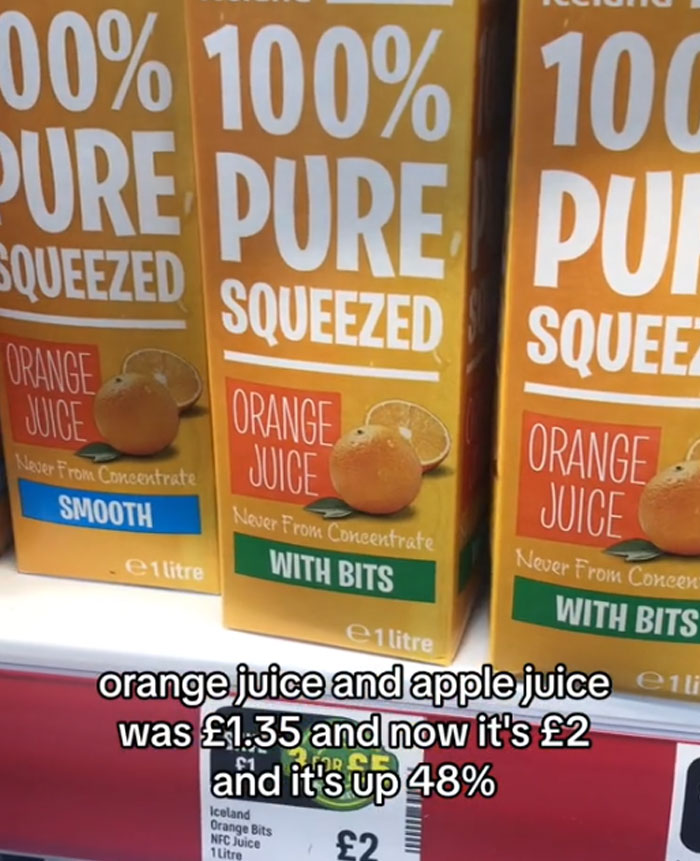
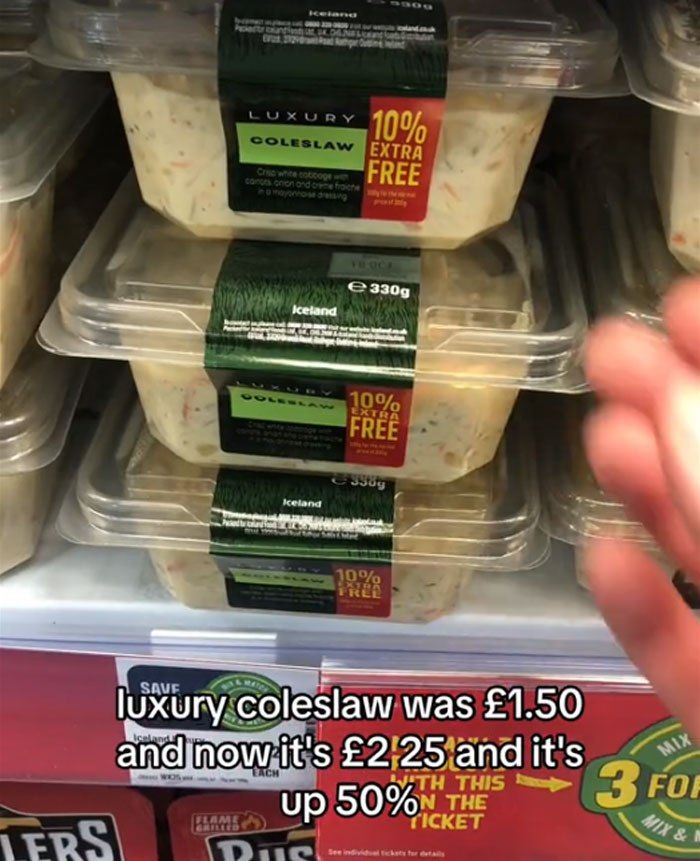

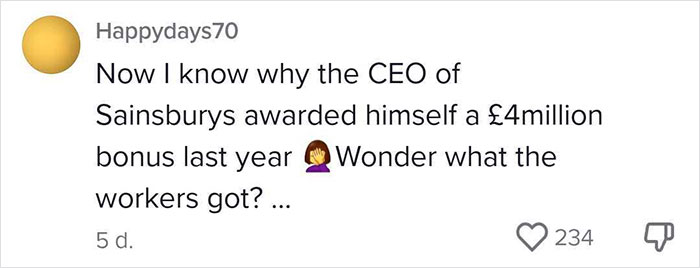

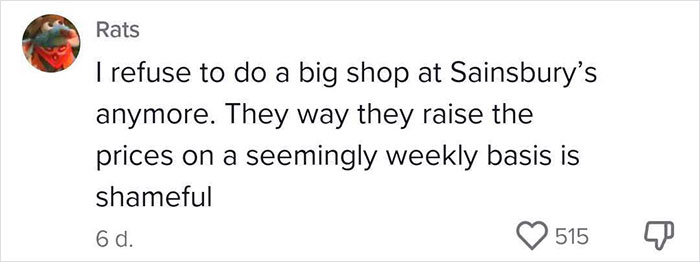
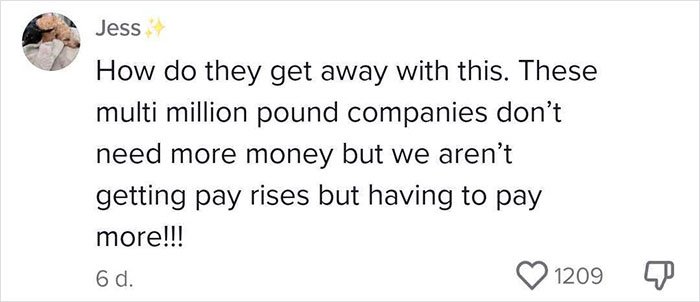







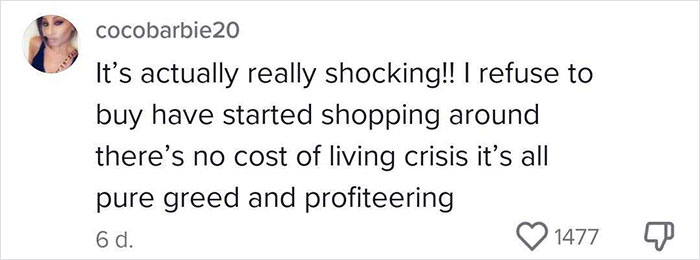












































77
67